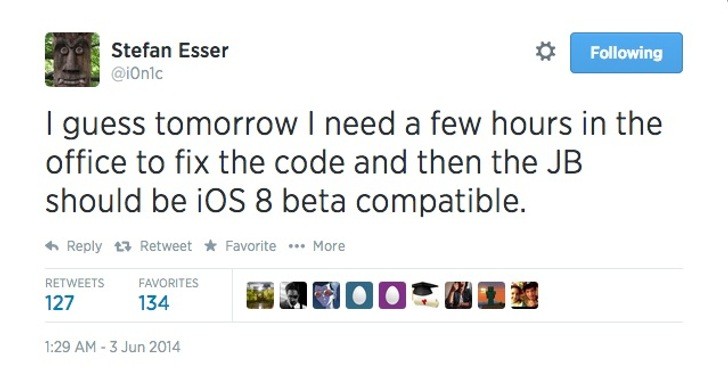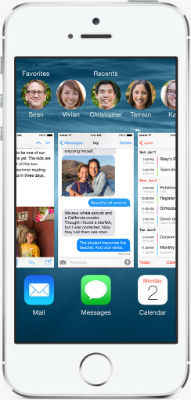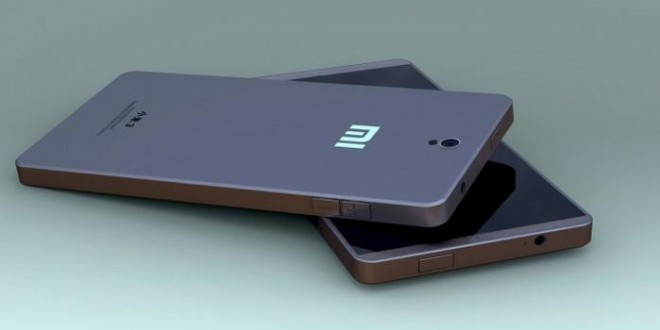Well-known
hacker Stefan Esser has announced plans to jailbreak Apple’s iOS 8 using
existing exploits that he developed on iOS 7.1.1. Not wanting to burn the
vulnerabilities, the security expert will likely refrain from releasing the
jailbreak until iOS 8 Final debuts this fall.
A series of tweets from the renowned security expert indicate that the iOS 8 jailbreak is pretty much a go. Esser says all he needs is to spend a few hours with the beta and find some relocated code to apply existing
vulnerabilities.
to apply existing
vulnerabilities.
“Download finished. Initial tests show that iOS 8 beta does not fix anything. Dumped kernel fine, but code changed and patches are not found. [...] I guess tomorrow I need a few hours in the office to fix the code and then the JB should be iOS 8 beta compatible . [...] Only question is if
Cydia runs at all in iOS 8,” he said.
. [...] Only question is if
Cydia runs at all in iOS 8,” he said.
Esser recently discovered new holes in Apple’s mobile software allowing him to compromise the
latest firmware, iOS 7.1.1. He showed off the feat on YouTube but refrained
from releasing the actual jailbreak to the public. As avid jailbreakers will
remember, Apple patched existing exploits with the release of iOS 7.1, making
the newly-discovered bugs
allowing him to compromise the
latest firmware, iOS 7.1.1. He showed off the feat on YouTube but refrained
from releasing the actual jailbreak to the public. As avid jailbreakers will
remember, Apple patched existing exploits with the release of iOS 7.1, making
the newly-discovered bugs very precious indeed.
very precious indeed.
The good news is that these newly-found vulnerabilities also seem applicable to iOS 8, meaning Esser and his hacking buds know about them
while Apple doesn’t. When iOS 8 is released this fall, it will basically be
vulnerable-on-arrival (VOA). We’re coining the term right here, right now.
buds know about them
while Apple doesn’t. When iOS 8 is released this fall, it will basically be
vulnerable-on-arrival (VOA). We’re coining the term right here, right now.
Jokes aside, iOS 8 seems poised to receive its much deserved jailbreak, as the firmware versions before it. The popularity of these hacks has diminished
substantially in recent times, but the hackers are still at it and many people
out there still use jailbreaking as a way to download unapproved software, such
as icon sets and themes.
has diminished
substantially in recent times, but the hackers are still at it and many people
out there still use jailbreaking as a way to download unapproved software, such
as icon sets and themes.
With iOS 8 slated to launch this fall, it could well be at least three to four months before jailbreak fans can get their hands on Esser’s work.
A series of tweets from the renowned security expert indicate that the iOS 8 jailbreak is pretty much a go. Esser says all he needs is to spend a few hours with the beta and find some relocated code
“Download finished. Initial tests show that iOS 8 beta does not fix anything. Dumped kernel fine, but code changed and patches are not found. [...] I guess tomorrow I need a few hours in the office to fix the code and then the JB should be iOS 8 beta compatible
Esser recently discovered new holes in Apple’s mobile software
The good news is that these newly-found vulnerabilities also seem applicable to iOS 8, meaning Esser and his hacking
Jokes aside, iOS 8 seems poised to receive its much deserved jailbreak, as the firmware versions before it. The popularity of these hacks
With iOS 8 slated to launch this fall, it could well be at least three to four months before jailbreak fans can get their hands on Esser’s work.





.jpg)
.jpg)
.jpg)

.jpg)
.jpg)
.jpg)
.jpg)
.jpg)
.jpg)














